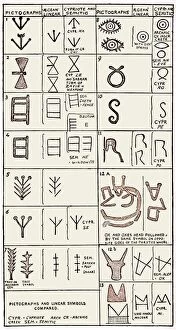Arthur Evans Collection
Sir Arthur Evans was a renowned British archaeologist who made significant contributions to the study of ancient civilizations
All Professionally Made to Order for Quick Shipping
Sir Arthur Evans was a renowned British archaeologist who made significant contributions to the study of ancient civilizations. One of his most notable achievements was his excavation and restoration work at the Palace of Knossos in Crete. In 1907, he posed among the ruins of this magnificent palace for an oil painting, capturing the essence of his groundbreaking discoveries. Evans followed in the footsteps of another great archaeologist, Heinrich Schliemann, who had unearthed treasures from Troy. Inspired by Schliemann's success, Evans embarked on his own archaeological journey and uncovered numerous artifacts that shed light on Minoan civilization. Among these discoveries were early Cretan libation vessels found at Knossos in 1933-1934. These vessels provided valuable insights into religious practices during ancient times. Additionally, Evans uncovered Linear A and Linear B tablets which contained mysterious scripts used by the Minoans. The grandeur of Knossos was evident through its royal road leading to the palace, dating back to the 15th century BC. The fresco depicting shields in the grand stairway showcased intricate artwork from around 18th century BC. To honor Sir Arthur Evans' immense contribution to archaeology, a bronze bust was created in his likeness during the 20th century. This sculpture immortalized him as a pioneer in understanding Minoan culture. A vintage photograph captured Evans amidst reconstruction efforts at Knossos; it depicted him tirelessly working towards preserving and restoring this historical site for future generations to appreciate. Today, visitors can explore this archaeological site located near Heraklion (aka Iraklion) on Crete island. The remnants discovered by Sir Arthur Evans continue to fascinate researchers studying Minoan civilization - their customs, beliefs, and daily life remain enigmatic yet captivating thanks to his tireless efforts.












